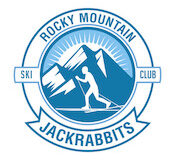One of the positive aspects of XC skiing is that it doesn’t take a lot of equipment. The equipment depends on age and ability.
“Poor equipment, equipment that doesn’t fit, or skis that are poorly prepared for the snow conditions may lead to a negative ski experience that can have a lasting impression on a child.”
– BCR Ski Leader Manual
Basic Equipment
Although the club doesn’t meet if the temperature drops below -20*C, it is still winter, and we are still playing in the snow. Ensuring your child is warm and comfortable will make the experience that much better. Dressing in layers both helps keep skiers warm, but also helps as they work hard and warm up, they can remove a layer, and put it back on later. The rule for layering is:
- Inner layer – warm and not itchy as it’s right next to the skin. It should wick away moisture – like a polypropylene underwear layer. A good warm layer over the trunk of the body is important.
- Middle layer – insulation. Fleece jackets are a good middle layer that can also be worn as the top layer when it’s warm out
- Top layer – wind and waterproof is the key. Something that doesn’t pick up snow if the kids are playing in the snow (or it is snowing out).
A good layering system of stuff you may already have would be a shirt, a sweater, a light jacket and a wind breaker.
All participants should have the following:
- Warm, waterproof pants that allow for easy movement
- A waterproof, winter jacket. As the kids get older and work harder while skiing, they can wear lighter jackets, but being wind/waterproof is key. For the younger kids, the jacket shouldn’t be so bulky that it hinders their movement. For older kids, XC skiing can be a very aerobic sport, so what works for sledding or downhill skiing will often be too warm for XC skiing.
- Long underwear – tops and bottoms are a good choice – MEC makes some great kids long underwear
- Gloves and mitts – a good idea to bring 2 pairs for the kids, as typically if we stop to warm up and have a snack inside, the gloves get soggy, quickly. Mittens are warmer than gloves, and nothing is worse than cold hands, so be prepared! Choose mitts that aren’t prone to snow ‘sticking’ to them (like fleece or wool).
- Warm toque and a neck tube or scarf – keep the head warm, keep the neck warm and have something to pull up over the face if it gets windy or cold. We want to avoid exposed skin, especially on cold or windy days.
- Helmets are optional
- Sunglasses or goggles – on those sunny, Alberta days, the sunglasses reduce the brightness and glare, and on the snowy days, they help keep the snowflakes out of your eyes
- A healthy, energy-filled snack and water – we typically ski for 50 minutes and then take a 10-15 minute break to have a snack, then continue on for another hour.
- Sunscreen – keep those noses and cheeks from being too rosy!
- Socks – try to avoid cotton socks, and get a wool blend hiking/skiing sock to help keep the feet dry and warm
For the smaller skiers that are using skis on their snowboots, ensure the snow boots are well fitting.
Age 4-6
Bunnies who are new to the sport can either use skis that attach to their regular snowboots via straps, or a dedicated boot and ski system. For the most part, bunnies don’t use poles, so don’t worry if you don’t have them. A shop will be able to fit your skis and boots to your child. As tempting as it may be to “stretch” out the equipment, get equipment that is sized for your child for this upcoming season, not next. Skis that are too long, or boots that are too big will just make your child’s experience that much harder. Waxless skis are the preferred choice at this stage of development. Since the skiers will have a parent accompanying them, being able to get their own skis on and off isn’t that important.
Ages 6-9
Once the kids develop their skills and begin to be able to explore longer trails, a properly sized ski becomes more important. This can be a challenge as the kids are growing at sometimes alarming rates! By this stage, the kids have learned to effectively use their poles. A dedicated ski and boot system will be necessary. Since RMJSC focuses on recreational skiing, the type of skis can either be light touring or recreational. The kids will do one day of coaching with an instructor who will teach them the basics of skate-skiing.
